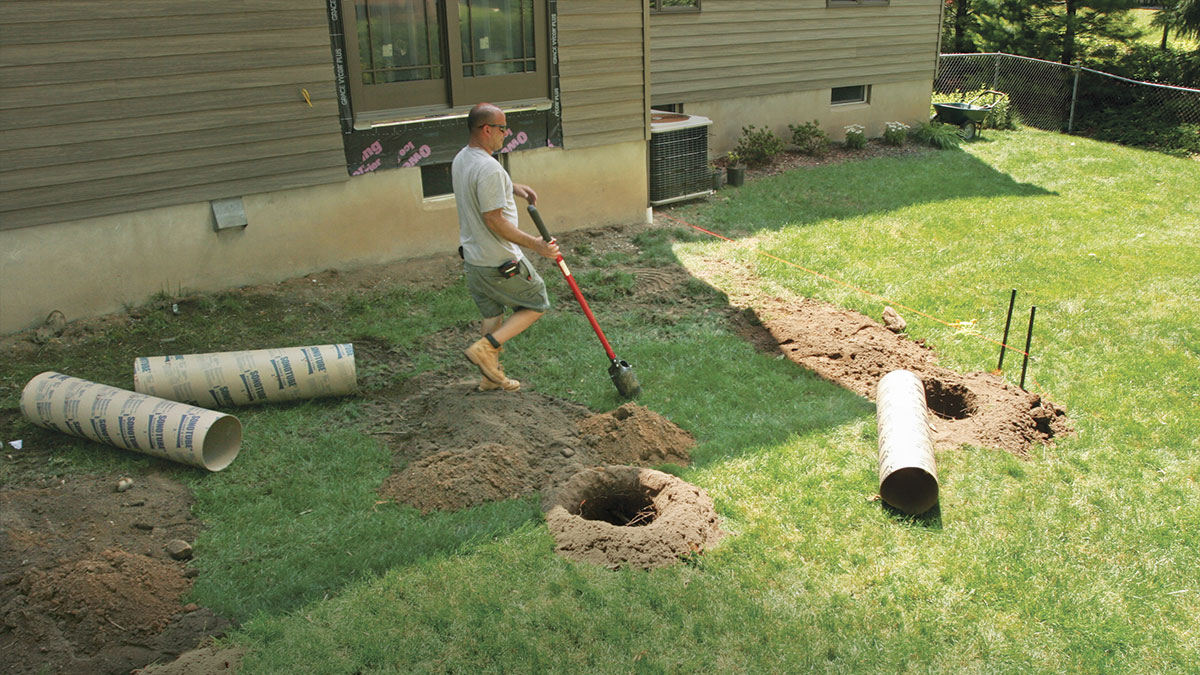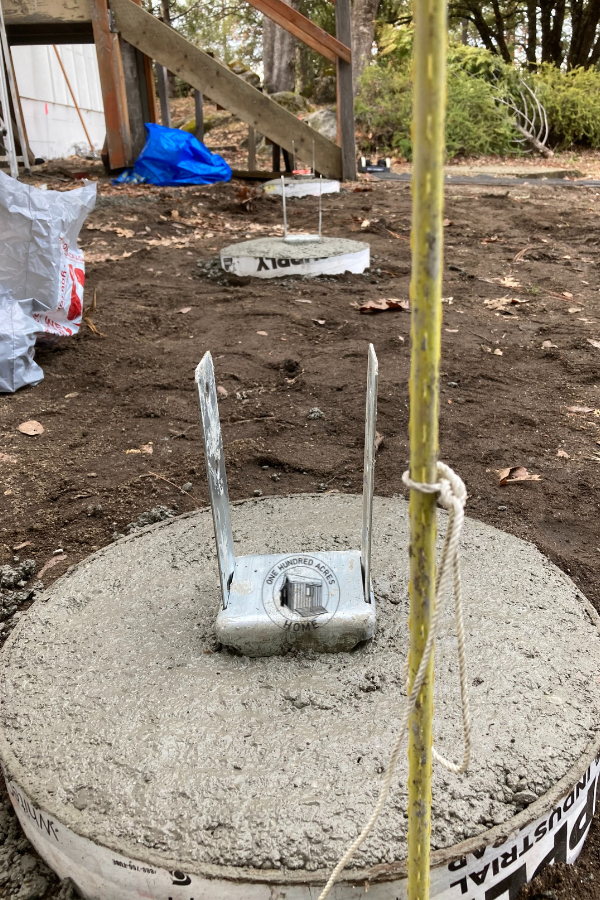Structure from the Ground Up: The Ultimate Guide to Creating and Setting Up Deck Footings
Wiki Article
Choosing the Right Deck Footings for Stability and Sturdiness
When it pertains to developing a deck, one of one of the most critical choices you will certainly make is picking the ideal grounds for stability and longevity. The long life and security of your deck depend heavily on the kind of footings you select, as they provide the crucial assistance and stability to withstand the examination of time. With a myriad of alternatives offered, it can be overwhelming to determine which grounds are best suited for your certain needs. In this conversation, we will discover the various sorts of deck grounds, think about the crucial variables to weigh when making a decision, and explore the advantages and disadvantages of different choices. By the end, you will have a clearer understanding of the options handy and be far better outfitted to make an educated decision for your deck project.Kinds Of Deck Footings
There are several sorts of deck footings that can be utilized, each offering special advantages and considerations. One common kind of ground is the concrete pier footing. These grounds include a round hole full of concrete, which gives a solid foundation for the deck articles. Concrete pier grounds are fairly simple to install and use excellent security, making them a popular selection for several deck projects.Another kind of ground is the helical heap ground. Helical stacks are steel shafts with helical plates connected to them. These footings are installed by screwing them into the ground, which creates a safe structure for the deck. Helical pile grounds are ideal for areas with difficult soil conditions, as they can be set up in practically any type of type of dirt. They also permit for simple change and progressing of the deck if required.
Additionally, some contractors choose precast concrete footings. These footings are made from long lasting concrete and come in various sizes and shapes to fit different deck styles. Precast concrete footings are hassle-free to set up and offer a stable base for the deck structure.
Ultimately, an additional option is the post-in-anchor ground system. This sort of ground entails driving a steel anchor into the ground and connecting it to the deck message. It supplies versatility in regards to positioning the deck posts and appropriates for decks with lightweight structures.
When picking the appropriate type of deck footing, it is necessary to take into consideration factors such as dirt conditions, deck tons, and neighborhood building regulations (Deck Footings). Consulting with a professional contractor or architectural designer can aid ensure the appropriate footing is picked for a safe and secure deck
Variables to Take Into Consideration When Selecting Footings
When selecting the proper footings for a deck, it is critical to thoroughly consider numerous variables such as soil problems, deck load, and adherence to neighborhood building codes. These elements play a substantial role in making sure the stability and sturdiness of the deck framework.The kind of soil on which the deck will certainly be constructed determines the kind of footings needed. On the other hand, decks built on clay or expansive soils might require footings that can suit the soil's propensity to expand and contract.
An additional vital aspect is the deck tons. The weight of the deck, including the materials made use of and any type of prospective real-time tons such as furnishings or gatherings, should be thought about when picking footings. The grounds must be made to birth the weight of the deck and distribute it equally to avoid any kind of structural issues or failings.
Last but not least, adherence to regional building codes is critical. Building regulations differ from area to region, and it is vital to conform with the particular requirements set by the local authorities. Deck Footings. These codes make certain that the deck is built safely and satisfies the needed standards for architectural honesty and load-bearing ability
Concrete Grounds: Pros and Cons

Concrete footings offer numerous benefits and negative aspects when used as the structure for a deck. On the positive side, concrete footings supply outstanding stability and toughness. Concrete is a solid and inflexible product that can sustain heavy lots and stand up to Bonuses numerous weather conditions. It also has a long lifespan, making it a trustworthy choice for long-term usage.
Another advantage of concrete footings is their convenience. They can be put into various forms and dimensions to accommodate various deck layouts and arrangements. Concrete grounds can be tailored to fit the details requirements and requirements of the deck framework.
However, there are likewise some downsides to using concrete grounds. One significant negative aspect is the price and labor included in their installment. Concrete footings call for excavation and commonly need the aid of hefty machinery. This can raise the overall price of the deck project and may need expert assistance.

Helical Piers Vs. Sonotubes: Which Is Better?
In thinking about the foundation alternatives for a deck, the contrast in between helical piers and sonotubes is crucial in establishing the superior choice. Helical piers, likewise referred to as screw piles, are steel shafts with helical plates affixed to them. They are twisted into the ground using hydraulic equipment, providing a stable and resilient foundation for the deck. On the other hand, sonotubes are round kinds made of cardboard or fiber product that are loaded with concrete. They are placed in an opening explored the ground and give assistance for the deck.When it comes to security and toughness, helical piers have the upper hand. The helical plates on the piers produce a strong grip with the soil, protecting against any activity or moving of the deck. This is specifically useful in locations with unstable or changing dirt problems. Sonotubes, on the other hand, depend only on the concrete loading for security, which may not use the same degree of strength and resistance.
In regards to installment, helical piers are relatively simpler and faster to mount compared to sonotubes. The hydraulic equipment made use of to twist the piers into the ground makes certain a reliable and quick procedure. Sonotubes, on the other hand, call for digging holes and putting concrete, which can be labor-intensive and time-consuming.
Additionally, helical piers are a more flexible alternative. If required, they can be utilized in different dirt conditions and can be adjusted or strengthened. Sonotubes, on the various other hand, may require added support, such as rebar, in important site specific soil conditions or locations with high lots requirements.
Choosing the Right Footings for Your Deck's Dimensions
For optimal structural integrity, it is important to carefully pick the proper grounds that straighten with the measurements of your deck. The measurements of your deck, including its size, height, and size, play a significant duty in identifying the kind and size of footings required.When selecting grounds for your deck, it is very important to consider the load-bearing ability of the dirt. The weight of the deck, combined with the weight of any furnishings or individuals on it, exerts a substantial force on the grounds (Deck Footings). Therefore, it is important to choose footings that can effectively support this weight without sinking or changing gradually.
The dimension and form of the grounds should also be thought about. Larger decks with greater dimensions call for larger footings to offer enough stability and assistance. The shape of the footings, whether they are round or square, depends upon the style and design of the deck. Furthermore, the deepness at which the grounds are installed ought to be determined based upon the frost line in your region to Resources stop any kind of heaving or changing due to freezing temperature levels.
Final Thought
In verdict, choosing the ideal deck footings is important for guaranteeing security and toughness. Variables such as the kind of footings, the deck's measurements, and the pros and cons of various options must be considered. Concrete footings supply toughness and long life, but may be much more costly and time-consuming to set up. Helical piers and sonotubes have their own benefits and negative aspects. Ultimately, selecting the suitable grounds for your deck's details needs is necessary for a resilient and effective framework.These footings are composed of a round hole filled with concrete, which supplies a solid foundation for the deck posts. Concrete pier grounds are relatively easy to install and supply exceptional security, making them a preferred selection for numerous deck tasks.
Precast concrete grounds are convenient to install and supply a steady base for the deck structure.
It uses adaptability in terms of placing the deck blog posts and is ideal for decks with light-weight frameworks.
Concrete grounds use a number of benefits and downsides when used as the foundation for a deck.
Report this wiki page